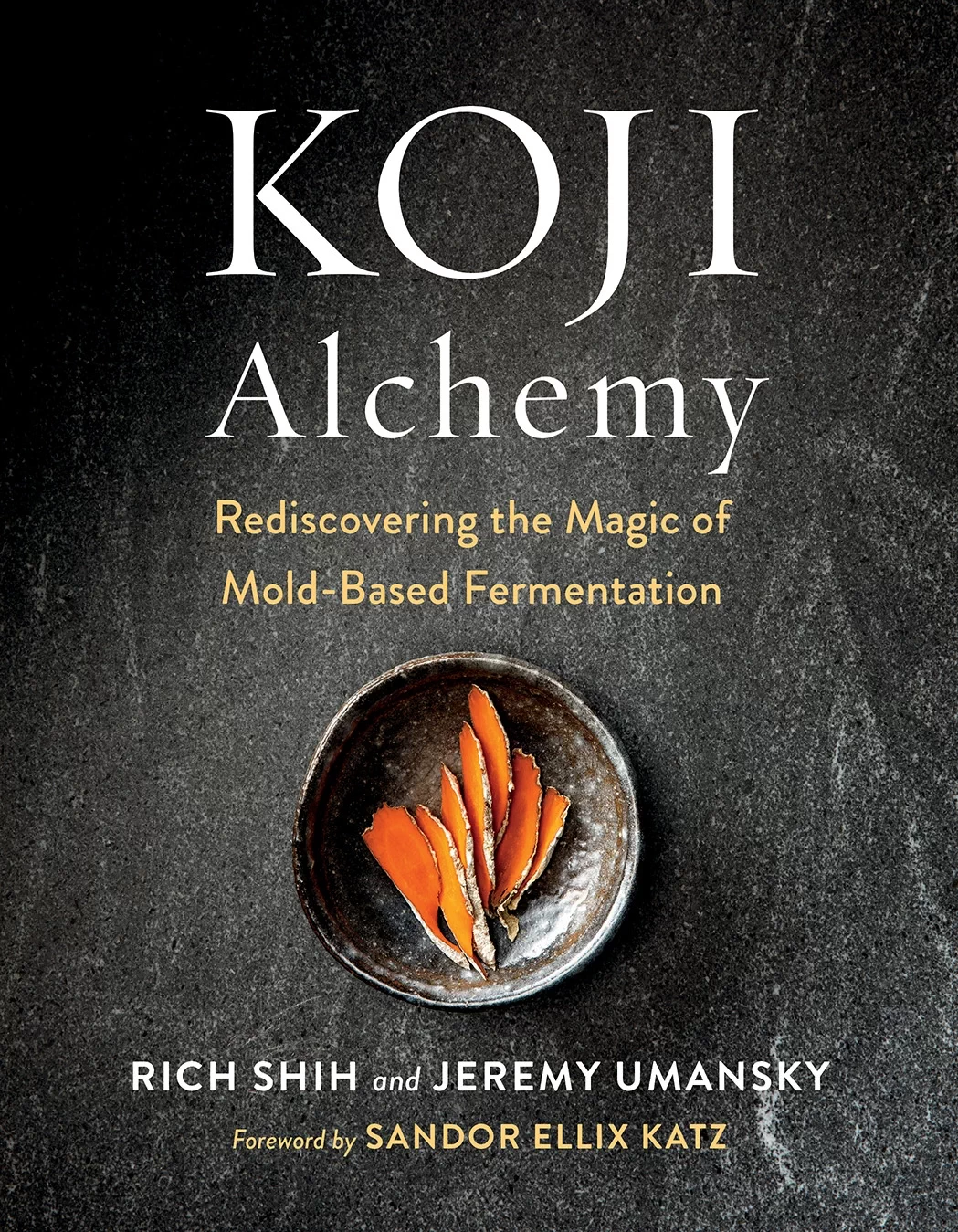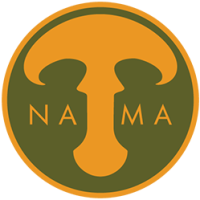You may be surprised to read that a book on koji, a mold-based ferment, is a dreamy COVID companion. But Koji Alchemy: Rediscovering the Magic of Mold-Based Fermentation by Rich Shih and NAMA member Jeremy Umansky, provides the enchantment that the title promises. The koji state of mind entails enthusiasm, community, discovery, comfort, and umami.
The authors define this fairy dust as “specific mold grown on a starch medium that can make food extraordinarily tasty if you mix a few ingredients together and wait.” The mold is Aspergillus oryzae. You probably have some koji in your kitchen right now, they add, since it’s an essential component of soy sauce. But “as delicious as soy sauce is,” they say, “we’ll show you that it only scratches the surface of what can be done with koji.” Its honeysuckle scent is intoxicating and heightens the flavor of just about any food it touches, from fresh fruit to prime beef to alcohol to cookies. It even improved one of my favorite quick meals: I rubbed some Shio koji from a Japanese grocery all over an Iowa pork chop, tucked it in the fridge overnight, and then cooked it in a cast-iron skillet. The resulting dinner was easier and more delicious, especially in texture, than the buttermilk brined chop I usually make.
The book includes a detailed chapter on making koji at home—where most of us spend most of our time right now. You need an oven, rice or other grain—the popcorn option intrigues me—and some spores. You’ll also need a little patience since the process takes about 36 hours. You could wear a mask while working with the spores since you already have one (right?). Umansky and Shih tell you how to choose your substrates and spores, and you can get these supplies delivered to your door. The photographs of the koji at various stages of growth are the best part of this section—the fluffy “mycelial mat” looks like golden goose down. They offer encouragement by reminding you that mold grows very readily in home kitchens. I know I could find some furry cheese growing in my refrigerator right now.
In their exuberant and inclusive prose, the authors also portray the tradition and community that Koji supports. Most materially, they include a detailed section on how to make Koji in the most traditional way possible. While many of us may not want to invest in the equipment, it is inspiring to learn about the refinements and discoveries that koji already bears within it along with the potential it still holds. Koji, the authors explain, is an “active culture” in every sense of the word “culture”.The authors maintain that this understanding and respect separates their approach to koji from cultural appropriation. To further demonstrate this point, they include brief, appreciative essays by many other food experts such as Gastropod’s Cynthia Graber and Kevin Farley, co-owner of The Cultured Pickle Shop in Berkeley, CA.
The recipe section fills roughly half the book. The range of innovation is astonishing: from cured meat to vegetable charcuterie, from aged alcohols to shio koji quickly blended from koji, salt, and water.
Packed with lucidly relayed scientific and technical information and leavened with enthusiasm, Koji Alchemy: Rediscovering the Magic of Mold-Based Fermentation offers access to discovery and community that COVID and quarantine have diminished. Best of all, it will expand your knowledge of fungus and expand your mycophagical repertoire.
Review by Barbara Ching, 2020


NAMA Store >